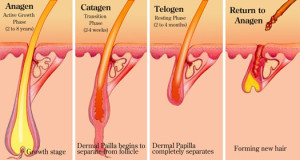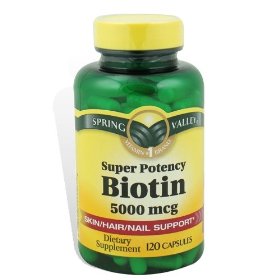
How can I use the hair growth cycle to help me take care of my hair? What’s the application?

Just to remind you from my blog post, the hair growth cycle is divided into three stages: Anagen (growth), Telogen (rest) and Catagen (degeneration). The majority of hairs on anyone’s head is usually in the Anagen phase. Therefore, the best way to ensure good hair growth is to make sure that you do not disrupt your hair growth cycle. This can be done by having a healthy diet. That way, you won’t prematurely shunt hairs meant to be in anagen into telogen because of vitamin or mineral deficiencies.
If that were to happen, you would get a Telogen Effluvium where you will find excessive shedding of your hair. In the acute phase, a Telogen Effluvium doesn’t last long. However, once it goes on for more than six months, it becomes chronic and you can experience significant reduction in the number of hairs on your head. So it is imperative to have a good diet, especially a good Iron intake.
Other than a good diet, and general good health, there’s nothing that you can do to speed up anagen because the body does its own thing. You can ,however, extend the anagen phase especially with hairs undergoing Telogen Effluvium. Products such as Rogaine (Minoxidil) have been shown to extend the anagen phase thus reducing hair loss from this Telogen Effluvium.
About
Dr. Llorenia Muir-Green is a practising dermatologist in Jamaica. She has an avid interest in hair and scalp disorders. She is a member of the Medical Association of Jamaica, Dermatology Association of Jamaica and is an Associate Member of the Caribbean Dermatology Association. She was a recipient of the 2013 Fellowship in Hair and Scalp Disorders at the University of British Columbia. Send in your questions to ask@askthehairdoc.com. Maybe you will see your question posted.

